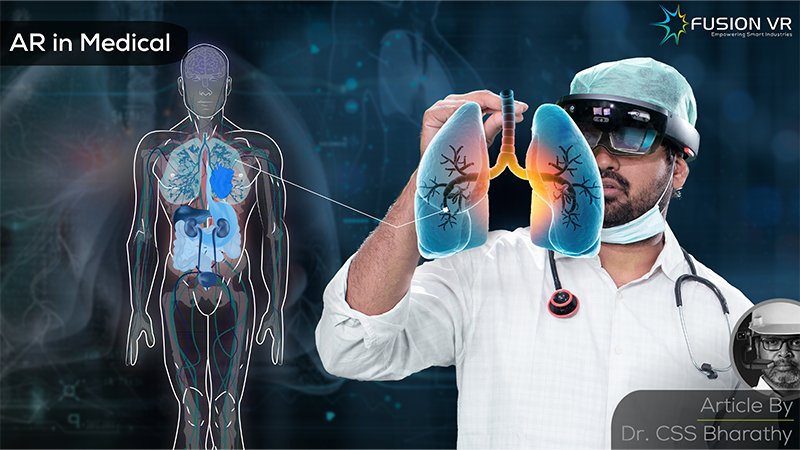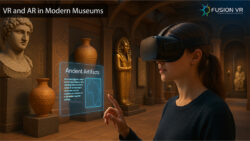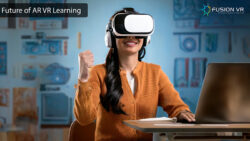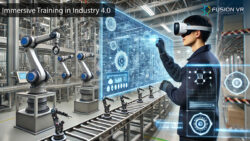Imagine you’re going under the knife for an important procedure. You see the best surgeon in town and place your life and future in his or her hands. Fortunately, everything goes well, and you’re back in action. Unfortunately, that has not always been the case for everyone. Errors do happen during surgery, and people’s lives have been altered irreversibly.
It is reported that more than 4000 surgical errors occur in the US each year, and that number, you and I would agree, needs to be brought down to as low as possible. Zero error is achievable. Fortunately, we have technologies readily available to help us achieve this.
Medical errors can be broadly classified as errors of omission and commission. In simple terms, errors that arise from not doing something that was necessary and errors that arise from incorrect actions, respectively. Such errors can be prevented with the use of augmented reality in the operating room, which will help the surgical team to be highly effective. AR surgery is like medical GPS! It’s guided.
Yeah, think about it for a second. AR-guided surgery is the next big thing in the field of medicine that will help the healthcare industry achieve a high percentage of positive patient outcomes. Most importantly, the medical fraternity needs to believe that all errors are preventable.
What makes AR truly exciting and promising is how accessible and simple this technology can be in the hands of medical professionals, particularly surgeons. In 2020, neurosurgeons at Johns Hopkins in the United States performed a procedure in which they accurately positioned six screws in the spine of a patient who was suffering from chronic back pain. Now I don’t need to explain how troublesome back pain can be. If you’re a very young reader of this blog, I would probably have to…. Just kidding, folks. I’m sure everyone appreciates how much back pain bothers people. Performing this type of surgery requires accuracy, and errors by the surgeon could be irreversible in most cases, including death.
AR in Surgery: Potential, Examples, and Benefits
AR uses imagery from diagnostic techniques such as CT scans, X-rays etc, to develop 3D models of body internals that can be accurately superimposed on the patient’s body during surgery. Surgical plans are developed and incorporated into the application, allowing surgeons to effectively execute the plan for the desired outcomes in the surgical field. While the potential for AR can be discussed at length, we can share examples of how AR is being used worldwide in surgeries.
In Switzerland, thirteen orthopaedic surgeons used AR glasses and performed 25 surgical procedures. They included surgeries on the spine, knee, hand, shoulder etc. This effort was to test the use of AR devices, its compatibility in the operating room, ease of use and effectiveness in surgical outcomes. The surgeons found great potential for correcting deformities, knee surgeries (osteotomy), tumour surgeries etc. They also found that the greatest benefits were expected in the areas of intraoperative accuracy, improved surgical outcomes and reduced exposure to radiation. All these benefits will be another step towards making surgeries safer.
The surgeons who participated in this effort were highly experienced, and six of them were chiefs in their areas. These results indicate there is an overall satisfaction in using AR technology by some of the real experts in their fields which is a significant development.
Many people want to avoid the trauma of surgery and tend to opt for medication to cure their conditions. There are also techniques that are minimally invasive such as laparoscopy, which requires only a small incision. AR uses the diagnostic images from scans and develops 3D models using commercial software, which were then edited using Unity and coded to enable rotation and translation of the 3D model using voice commands and gestures.
This enables surgeons to use the holographic image of the body part projected on the patient to develop and implement surgical approaches in the operating room. This enables the surgeons to target specific locations for incisions and perform minimally invasive procedures.
Planning for surgery involves multidisciplinary teams in a hospital. Surgical plans can be developed before the operation with a team of experts from across the globe, and voice-over instructions could be inbuilt to assist the surgeon in performing the procedure. Errors can be greatly avoided with such guidance. Furthermore, the AR device works by the surgeon and can also be streamed to other surgeons for remote assistance, monitoring and guidance. The family and friends of the patient can also view the surgery without being in the operating theatre.
Another great benefit of AR surgery is for medical students to observe and learn how complex surgeries are performed. Recordings of such surgeries can be viewed repetitively, and procedures established or improved based on the experience gained. It is absolutely necessary that young doctors gain not only the knowledge but also the disciplined approaches needed when performing surgeries.
The necessity of zero tolerance for errors must be inculcated from an early stage of their careers. A vast repository of knowledge can be built and maintained for the benefit of doctors and patients alike. This is again bound to make a case for augmented reality for surgery stronger for it to be adopted and help deliver safer surgeries for everyone in the future.
AR helps to reduce errors and potentially helps reduce legal challenges for surgeons in medical malpractice cases. AR-assisted surgeries tend to be team events involving a body of experts, and there is first-hand evidence of how the procedures were actually performed for future investigation. The medical community can undertake their tasks with much less fear or apprehension about things going wrong and, in some cases, despite best efforts.
The COVID-19 pandemic has also accelerated the adoption of AR in hospitals worldwide. It has helped us relook at the way we typically do things. The number of personnel allowed in the operating theatre was reduced to minimise the risk of infection. Furthermore, experts were unable to travel due to lockdowns and other travel restrictions. Augmented reality technology helped bring all these people virtually into the operating room and delivered safer and better outcomes for the patient.
As the benefits of Augmented reality in medical surgery become more widely known and accepted, it is important that hospitals engage technology professionals in evaluating new use cases and developing customised solutions. The solutions developed need to be designed, implemented and supported by an expert solutions provider. This is crucial as domain knowledge coupled with technical knowledge is not available everywhere. Most AR companies have gaming expertise but not the capabilities to develop, implement and support such solutions over a long period of time. The commitment from the developer to work closely with the surgeons, administrators and IT team is paramount to success.
In the end, we realise how important and useful AR is towards making surgery safer and improving the quality of people’s lives. Human life is precious, and everyone must do their part in protecting it. The integration of these technologies into all areas of industry and human endeavour is reaching a tipping point. It is important for everyone to equip themselves with the knowledge of these technologies and help make a difference in the organisations they are associated with.





